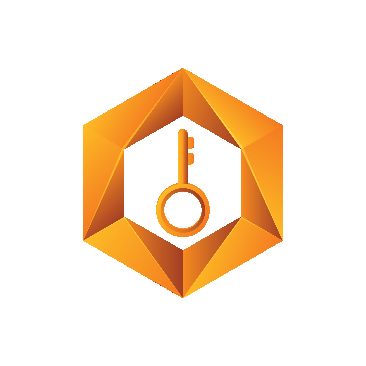

 Figure Heloc(FIGR_HELOC)$1.01-1.94%
Figure Heloc(FIGR_HELOC)$1.01-1.94% Wrapped stETH(WSTETH)$4,119.690.37%
Wrapped stETH(WSTETH)$4,119.690.37% USDS(USDS)$1.000.03%
USDS(USDS)$1.000.03% Wrapped eETH(WEETH)$3,652.390.31%
Wrapped eETH(WEETH)$3,652.390.31% Binance Bridged USDT (BNB Smart Chain)(BSC-USD)$1.000.06%
Binance Bridged USDT (BNB Smart Chain)(BSC-USD)$1.000.06% WETH(WETH)$3,370.010.34%
WETH(WETH)$3,370.010.34% Hyperliquid(HYPE)$29.351.14%
Hyperliquid(HYPE)$29.351.14% Coinbase Wrapped BTC(CBBTC)$92,720.00-1.26%
Coinbase Wrapped BTC(CBBTC)$92,720.00-1.26% Ethena USDe(USDE)$1.00-0.05%
Ethena USDe(USDE)$1.00-0.05% USDT0(USDT0)$1.00-0.02%
USDT0(USDT0)$1.00-0.02% sUSDS(SUSDS)$1.081.22%
sUSDS(SUSDS)$1.081.22% World Liberty Financial(WLFI)$0.154479-0.58%
World Liberty Financial(WLFI)$0.154479-0.58% Ethena Staked USDe(SUSDE)$1.210.02%
Ethena Staked USDe(SUSDE)$1.210.02% Bittensor(TAO)$302.70-0.87%
Bittensor(TAO)$302.70-0.87% USD1(USD1)$1.000.00%
USD1(USD1)$1.000.00% Rain(RAIN)$0.00802722.72%
Rain(RAIN)$0.00802722.72% Canton(CC)$0.0750841.78%
Canton(CC)$0.0750841.78% MemeCore(M)$1.457.53%
MemeCore(M)$1.457.53% Falcon USD(USDF)$1.000.03%
Falcon USD(USDF)$1.000.03% Ethena(ENA)$0.266918-6.85%
Ethena(ENA)$0.266918-6.85% Binance-Peg WETH(WETH)$3,374.140.39%
Binance-Peg WETH(WETH)$3,374.140.39% Aster(ASTER)$0.960.64%
Aster(ASTER)$0.960.64% Jito Staked SOL(JITOSOL)$172.11-2.93%
Jito Staked SOL(JITOSOL)$172.11-2.93% BlackRock USD Institutional Digital Liquidity Fund(BUIDL)$1.000.00%
BlackRock USD Institutional Digital Liquidity Fund(BUIDL)$1.000.00% Pi Network(PI)$0.214756-2.30%
Pi Network(PI)$0.214756-2.30% Pump.fun(PUMP)$0.003009-4.54%
Pump.fun(PUMP)$0.003009-4.54% Wrapped SOL(SOL)$137.98-2.96%
Wrapped SOL(SOL)$137.98-2.96% Jupiter Perpetuals Liquidity Provider Token(JLP)$4.78-1.34%
Jupiter Perpetuals Liquidity Provider Token(JLP)$4.78-1.34% Ondo(ONDO)$0.50-1.23%
Ondo(ONDO)$0.50-1.23% syrupUSDC(SYRUPUSDC)$1.14-0.02%
syrupUSDC(SYRUPUSDC)$1.14-0.02% HTX DAO(HTX)$0.0000020.16%
HTX DAO(HTX)$0.0000020.16%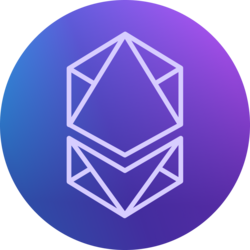 ether.fi Staked ETH(EETH)$3,373.190.38%
ether.fi Staked ETH(EETH)$3,373.190.38% Global Dollar(USDG)$1.000.00%
Global Dollar(USDG)$1.000.00% Circle USYC(USYC)$1.110.00%
Circle USYC(USYC)$1.110.00% syrupUSDT(SYRUPUSDT)$1.11-0.08%
syrupUSDT(SYRUPUSDT)$1.11-0.08% BFUSD(BFUSD)$1.000.00%
BFUSD(BFUSD)$1.000.00% Ripple USD(RLUSD)$1.00-0.03%
Ripple USD(RLUSD)$1.00-0.03% Sky(SKY)$0.0563192.55%
Sky(SKY)$0.0563192.55% Binance Bridged USDC (BNB Smart Chain)(USDC)$1.00-0.01%
Binance Bridged USDC (BNB Smart Chain)(USDC)$1.00-0.01% Binance Staked SOL(BNSOL)$150.01-3.08%
Binance Staked SOL(BNSOL)$150.01-3.08% Official Trump(TRUMP)$5.81-1.89%
Official Trump(TRUMP)$5.81-1.89% Midnight(NIGHT)$0.06962162.79%
Midnight(NIGHT)$0.06962162.79% Liquid Staked ETH(LSETH)$3,605.470.20%
Liquid Staked ETH(LSETH)$3,605.470.20% Function FBTC(FBTC)$92,890.00-1.04%
Function FBTC(FBTC)$92,890.00-1.04% Lombard Staked BTC(LBTC)$92,999.00-1.02%
Lombard Staked BTC(LBTC)$92,999.00-1.02% Solv Protocol BTC(SOLVBTC)$92,688.00-1.07%
Solv Protocol BTC(SOLVBTC)$92,688.00-1.07% USDtb(USDTB)$1.00-0.06%
USDtb(USDTB)$1.00-0.06% Renzo Restaked ETH(EZETH)$3,597.240.42%
Renzo Restaked ETH(EZETH)$3,597.240.42% Kinetiq Staked HYPE(KHYPE)$29.591.72%
Kinetiq Staked HYPE(KHYPE)$29.591.72% OUSG(OUSG)$113.580.01%
OUSG(OUSG)$113.580.01% Superstate Short Duration U.S. Government Securities Fund (USTB)(USTB)$10.920.01%
Superstate Short Duration U.S. Government Securities Fund (USTB)(USTB)$10.920.01%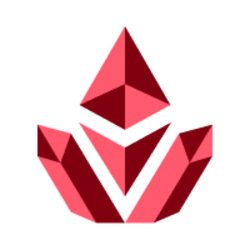 Mantle Staked Ether(METH)$3,652.100.68%
Mantle Staked Ether(METH)$3,652.100.68% Pudgy Penguins(PENGU)$0.012328-4.32%
Pudgy Penguins(PENGU)$0.012328-4.32% WrappedM by M^0(WM)$1.000.01%
WrappedM by M^0(WM)$1.000.01% Janus Henderson Anemoy AAA CLO Fund(JAAA)$1.020.01%
Janus Henderson Anemoy AAA CLO Fund(JAAA)$1.020.01% Arbitrum Bridged WBTC (Arbitrum One)(WBTC)$92,579.00-1.21%
Arbitrum Bridged WBTC (Arbitrum One)(WBTC)$92,579.00-1.21% Jupiter(JUP)$0.234261-1.60%
Jupiter(JUP)$0.234261-1.60% Wrapped Flare(WFLR)$0.012920-2.34%
Wrapped Flare(WFLR)$0.012920-2.34% Story(IP)$2.16-3.20%
Story(IP)$2.16-3.20% clBTC(CLBTC)$92,416.00-3.08%
clBTC(CLBTC)$92,416.00-3.08% Polygon Bridged USDC (Polygon PoS)(USDC.E)$1.00-0.01%
Polygon Bridged USDC (Polygon PoS)(USDC.E)$1.00-0.01% Ondo US Dollar Yield(USDY)$1.11-0.10%
Ondo US Dollar Yield(USDY)$1.11-0.10% StakeWise Staked ETH(OSETH)$3,486.210.17%
StakeWise Staked ETH(OSETH)$3,486.210.17% Jupiter Staked SOL(JUPSOL)$159.53-2.94%
Jupiter Staked SOL(JUPSOL)$159.53-2.94% USDai(USDAI)$1.000.04%
USDai(USDAI)$1.000.04%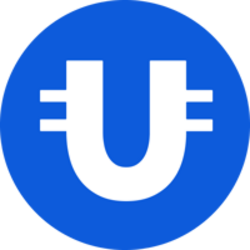 Ultima(ULTIMA)$6,487.364.90%
Ultima(ULTIMA)$6,487.364.90% Polygon PoS Bridged DAI (Polygon POS)(DAI)$1.000.02%
Polygon PoS Bridged DAI (Polygon POS)(DAI)$1.000.02% L2 Standard Bridged WETH (Base)(WETH)$3,374.110.43%
L2 Standard Bridged WETH (Base)(WETH)$3,374.110.43% SPX6900(SPX)$0.67-2.13%
SPX6900(SPX)$0.67-2.13% Aerodrome Finance(AERO)$0.66-3.35%
Aerodrome Finance(AERO)$0.66-3.35% Virtuals Protocol(VIRTUAL)$0.88-2.89%
Virtuals Protocol(VIRTUAL)$0.88-2.89%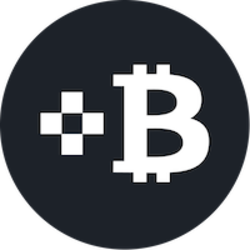 tBTC(TBTC)$92,328.00-1.49%
tBTC(TBTC)$92,328.00-1.49% Usual USD(USD0)$1.000.04%
Usual USD(USD0)$1.000.04% MYX Finance(MYX)$2.85-5.88%
MYX Finance(MYX)$2.85-5.88% GTETH(GTETH)$3,374.840.57%
GTETH(GTETH)$3,374.840.57% Celestia(TIA)$0.63-1.27%
Celestia(TIA)$0.63-1.27% Starknet(STRK)$0.111729-2.59%
Starknet(STRK)$0.111729-2.59% Ether.fi(ETHFI)$0.88-1.02%
Ether.fi(ETHFI)$0.88-1.02% Bridged Wrapped Ether (Pundi AIFX Omnilayer)(WETH)$35,382,014.000.00%
Bridged Wrapped Ether (Pundi AIFX Omnilayer)(WETH)$35,382,014.000.00%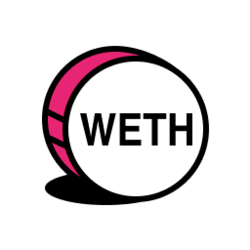 Arbitrum Bridged WETH (Arbitrum One)(WETH)$3,372.110.34%
Arbitrum Bridged WETH (Arbitrum One)(WETH)$3,372.110.34%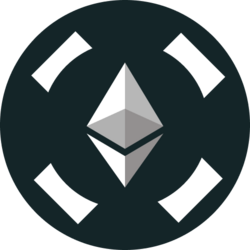 Stader ETHx(ETHX)$3,627.080.39%
Stader ETHx(ETHX)$3,627.080.39% cgETH Hashkey Cloud(CGETH.HASHKEY)$2,460.420.00%
cgETH Hashkey Cloud(CGETH.HASHKEY)$2,460.420.00% Wrapped ApeCoin(WAPE)$0.242261-5.86%
Wrapped ApeCoin(WAPE)$0.242261-5.86%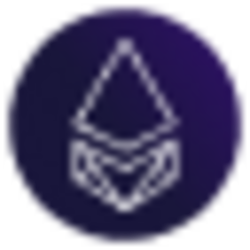 Ether.Fi Liquid ETH(LIQUIDETH)$3,598.761.88%
Ether.Fi Liquid ETH(LIQUIDETH)$3,598.761.88% Spiko EU T-Bills Money Market Fund(EUTBL)$1.220.21%
Spiko EU T-Bills Money Market Fund(EUTBL)$1.220.21% Kaia(KAIA)$0.077889-2.64%
Kaia(KAIA)$0.077889-2.64% DoubleZero(2Z)$0.131175-2.03%
DoubleZero(2Z)$0.131175-2.03% GHO(GHO)$1.000.00%
GHO(GHO)$1.000.00% Swell Ethereum(SWETH)$3,698.560.03%
Swell Ethereum(SWETH)$3,698.560.03% Mantle Bridged USDT (Mantle)(USDT)$1.000.47%
Mantle Bridged USDT (Mantle)(USDT)$1.000.47% AB(AB)$0.004707-0.40%
AB(AB)$0.004707-0.40% Steakhouse USDC Morpho Vault(STEAKUSDC)$1.110.00%
Steakhouse USDC Morpho Vault(STEAKUSDC)$1.110.00% dogwifhat(WIF)$0.409828-7.67%
dogwifhat(WIF)$0.409828-7.67% Pyth Network(PYTH)$0.070505-1.74%
Pyth Network(PYTH)$0.070505-1.74% sBTC(SBTC)$92,296.00-2.12%
sBTC(SBTC)$92,296.00-2.12% Sad Coin(SAD)$0.3892658.04%
Sad Coin(SAD)$0.3892658.04% Sun Token(SUN)$0.020403-1.14%
Sun Token(SUN)$0.020403-1.14% Lorenzo Wrapped Bitcoin(ENZOBTC)$90,454.000.00%
Lorenzo Wrapped Bitcoin(ENZOBTC)$90,454.000.00% Binance-Peg Dogecoin(DOGE)$0.147073-2.52%
Binance-Peg Dogecoin(DOGE)$0.147073-2.52% Fartcoin(FARTCOIN)$0.378021-0.82%
Fartcoin(FARTCOIN)$0.378021-0.82% Sonic(S)$0.098232-1.10%
Sonic(S)$0.098232-1.10% Merlin Chain(MERL)$0.339063-3.27%
Merlin Chain(MERL)$0.339063-3.27%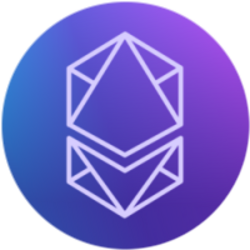 Arbitrum Bridged Wrapped eETH (Arbitrum)(WEETH)$3,648.760.37%
Arbitrum Bridged Wrapped eETH (Arbitrum)(WEETH)$3,648.760.37% Plasma(XPL)$0.175410-0.22%
Plasma(XPL)$0.175410-0.22% Stable(STABLE)$0.019015-3.97%
Stable(STABLE)$0.019015-3.97% pippin(PIPPIN)$0.3410985.08%
pippin(PIPPIN)$0.3410985.08%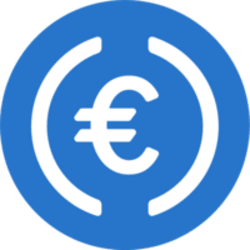 EURC(EURC)$1.170.12%
EURC(EURC)$1.170.12% Vision(VSN)$0.097003-0.21%
Vision(VSN)$0.097003-0.21% Kinesis Gold(KAU)$134.94-0.14%
Kinesis Gold(KAU)$134.94-0.14% Mantle Restaked ETH(CMETH)$3,659.140.93%
Mantle Restaked ETH(CMETH)$3,659.140.93% Maple Finance(SYRUP)$0.2801821.64%
Maple Finance(SYRUP)$0.2801821.64% Polygon PoS Bridged WETH (Polygon POS)(WETH)$3,374.110.40%
Polygon PoS Bridged WETH (Polygon POS)(WETH)$3,374.110.40% Binance-Peg BUSD(BUSD)$1.010.19%
Binance-Peg BUSD(BUSD)$1.010.19% Cap USD(CUSD)$1.00-0.17%
Cap USD(CUSD)$1.00-0.17% ZKsync(ZK)$0.0358982.73%
ZKsync(ZK)$0.0358982.73% LayerZero(ZRO)$1.51-0.02%
LayerZero(ZRO)$1.51-0.02% Hajimi(哈基米)$0.30337318.48%
Hajimi(哈基米)$0.30337318.48% Unit Bitcoin(UBTC)$92,973.00-0.80%
Unit Bitcoin(UBTC)$92,973.00-0.80% MimbleWimbleCoin(MWC)$27.09-2.98%
MimbleWimbleCoin(MWC)$27.09-2.98% Wrapped STX (Velar)(WSTX)$0.298719-0.03%
Wrapped STX (Velar)(WSTX)$0.298719-0.03% Monad(MON)$0.027378-0.47%
Monad(MON)$0.027378-0.47% Janus Henderson Anemoy Treasury Fund(JTRSY)$1.090.01%
Janus Henderson Anemoy Treasury Fund(JTRSY)$1.090.01% crvUSD(CRVUSD)$1.000.07%
crvUSD(CRVUSD)$1.000.07% Aster Staked BNB(ASBNB)$953.57-1.63%
Aster Staked BNB(ASBNB)$953.57-1.63% Wrapped HYPE(WHYPE)$29.421.57%
Wrapped HYPE(WHYPE)$29.421.57% Mantle Bridged WETH (Mantle)(WETH)$3,385.010.87%
Mantle Bridged WETH (Mantle)(WETH)$3,385.010.87% Gate Wrapped BTC(GTBTC)$92,841.00-1.20%
Gate Wrapped BTC(GTBTC)$92,841.00-1.20% Zebec Network(ZBCN)$0.002868-3.33%
Zebec Network(ZBCN)$0.002868-3.33% Falcon Finance(FF)$0.117499-1.77%
Falcon Finance(FF)$0.117499-1.77% Binance Wrapped BTC(BBTC)$92,671.00-1.28%
Binance Wrapped BTC(BBTC)$92,671.00-1.28% Fluid(FLUID)$3.482.14%
Fluid(FLUID)$3.482.14% Wrapped AVAX(WAVAX)$14.48-0.93%
Wrapped AVAX(WAVAX)$14.48-0.93% Fidelity Digital Interest Token(FDIT)$1.000.00%
Fidelity Digital Interest Token(FDIT)$1.000.00%
Ethereum is a decentralized global software platform powered by blockchain technology. It is most commonly known by investors for its native cryptocurrency, ether (ETH), and by developers for its use in blockchain and decentralized finance application development.
Anyone can use Ethereum—it's designed to be scalable, programmable, secure, and decentralized—to create any secured digital technology. Its token is designed to pay for work done supporting the blockchain, but participants can also use it to pay for tangible goods and services if accepted.
Blockchain Technology
Ethereum uses a blockchain, which is a distributed ledger (like a database). Information is stored in blocks, each containing encoded data from the block before it and the new information. This creates an encoded chain of information that cannot be changed. Throughout the blockchain network, an identical copy of the blockchain is distributed.
Each cell, or block, is created with new ether tokens awarded to the validator for the work required to validate the information in one block and propose a new one. The ether is assigned to the validator's address.
Once a new block is proposed, it is validated by a network of automated programs that reach a consensus on the validity of transaction information. On the Ethereum blockchain, consensus is reached after the data and hash are passed between the consensus layer and the execution layer. Enough validators must demonstrate that they all had the same comparative results, and the block becomes finalized.
Ethereum 2.0 (often referred to as ETH2) is a major upgrade to the Ethereum network. It’s been designed to allow the Ethereum network to grow while increasing security, speed, and efficiency, and was implemented in September 2022, merging the original blockchain with the ETH2 blockchain.
Why is Ethereum 2.0 necessary? Moving a popular cryptoasset to a new platform is a complex endeavor, but for Ethereum to scale and evolve, it needed to happen. That’s because the “Proof of Work” method used by the ETH 1.0 blockchain to verify transactions caused bottlenecks, increased fees, and consumed substantial resources (particularly electricity).
What is Proof of Work? How do cryptocurrency networks make sure that nobody spends the same money twice without a central authority like Visa or Paypal in the middle? They use a consensus mechanism. When ETH 1.0 launched, it adopted the consensus mechanism pioneered by Bitcoin: the aptly named Proof of Work.
Proof of Work requires a huge amount of processing power, which is contributed by virtual “miners” around the world who compete to be the first to solve a time-consuming math puzzle.
The winner gets to update the blockchain with the latest verified transactions, and is rewarded with a predetermined amount of ETH.
This process happens every 30 seconds (compared to Bitcoin’s approximately 10-minute cadence). As traffic on the network has increased, the limitations of Proof of Work have caused bottlenecks during which fees spike unpredictably
When a transaction triggers a smart contract, all nodes of the network execute every instruction. To do this, Ethereum implements an execution environment on the blockchain called the Ethereum Virtual Machine (EVM). All nodes on the network run the EVM as part of the block verification protocol. In block verification, each node goes through the transactions listed in the block they are verifying and runs the code as triggered by the transactions in the EVM. All nodes on the network do the same calculations to keep their ledgers in sync. Every transaction must include a gas limit and a fee that the sender is willing to pay for the transaction. Miners have the choice of including the transaction and collecting the fee or not. If the total amount of gas needed to process the transaction is less than or equal to the gas limit, the transaction is processed. If the gas expended reaches the gas limit before the transaction is completed, the transaction does not go through and the fee is still lost. All gas not used by transaction execution is reimbursed to the sender as Ether. This means that it's safe to send transactions with a gas limit above the estimates.
You can pay for transactions using Ether. Ether serves two purposes. First, it prevents bad actors from congesting the network with unnecessary transactions. Second, it acts as an incentive for users to contribute resources and validate transactions (mining). Each transaction in Ethereum constitutes a series of operations to occur on the network (i.e. a transfer of Ether from one account to another or a complex state-changing operation in a smart contract). Each of these operations have a cost, which is measured in gas, the fee-measure in Ethereum. Gas fees are are paid in Ether, and are often measured in a smaller denomination called gwei. [1 ether = 1,000,000,000 gwei (10^9)]
There are two types of accounts in Ethereum: Externally Owned Accounts (EOA) and Contract Accounts. An EOA is controlled by a private key, has no associated code, and can send transactions. A contract account has an associated code that executes when it receives a transaction from an EOA. A contract account cannot initiate transactions on its own. Transactions must always originate from an EOA.
You can buy Ether with fiat currency from a cryptocurrency exchange like Coinbase or Kraken. Ether is associated with your Ethereum account. To access your account and Ether, you must have your account address and the passphrase or the private key.
A transaction in Ethereum is a signed data message sent from one Ethereum account to another. It contains the transaction sender and recipient information, the option to include the amount of Ether to be transferred, the smart contract bytecode, and the transaction fee the sender is willing to pay to the network validators to have the transaction included in the blockchain, known as gas price and limit.
Vitalik Buterin, credited with conceiving Ethereum, published a white paper introducing it in 2014.
The Ethereum platform was launched in 2015 by Buterin and Joe Lubin, founder of the blockchain software company ConsenSys.
The founders of Ethereum were among the first to consider the full potential of blockchain technology beyond just enabling a secure virtual payment method.
Since the launch of Ethereum, ether as a cryptocurrency has risen to become the second-largest cryptocurrency by market value. It is outranked only by Bitcoin.
Transactions can also be used to publish smart contract code to the Ethereum blockchain. You can follow the transaction status with the method eth_getTransactionReceipt, which will also return the newly created smart contract address once it’s included on the blockchain. The resulting smart contract address cannot be chosen, as they are calculated using a hash function and can’t be easily predicted.
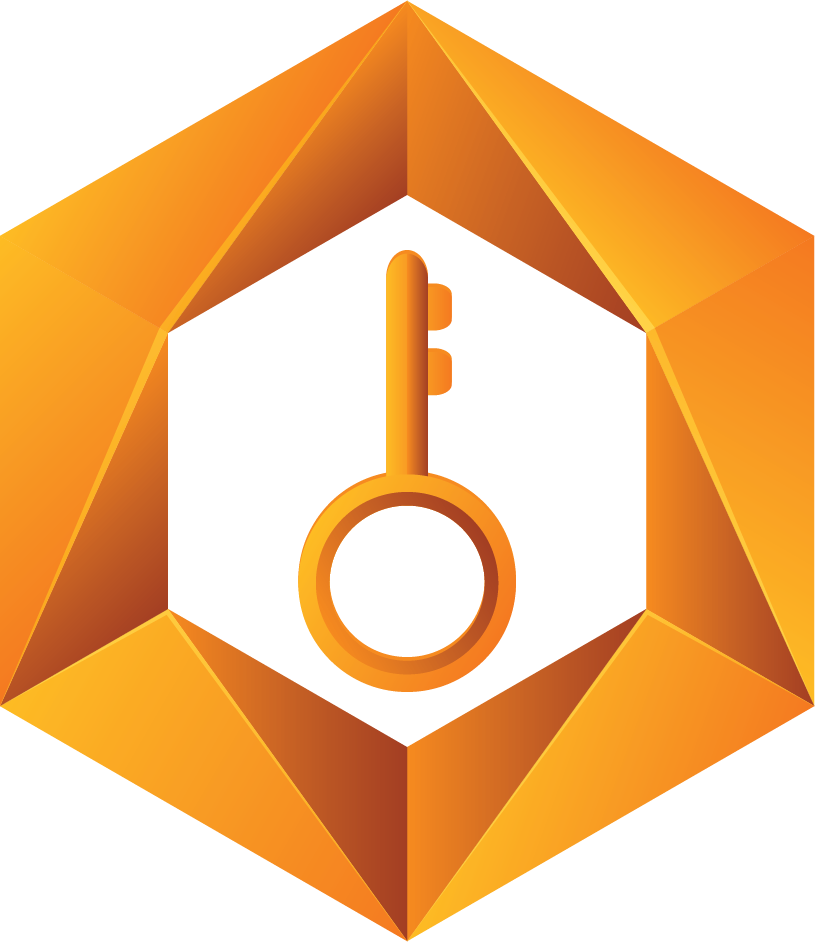
Keycoin was established with a vision to cater and develop the futuristic ideas around the globe.